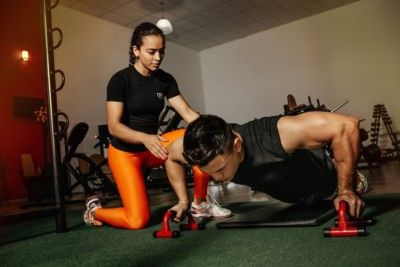Functional Training Exercises – Combining Sport and Health

Functional training exercises – Sport and health
Exercises, such as in the Functional Training Studio in Munich, lead to a workout for the whole body. This serves several purposes:
- Effective muscle building,
- better coordination and agility,
- Strengthen endurance and physical health.
The targeted and varied movement sequences strengthen the functional muscle chains and stabilize the joints at the same time.
Objectives of Functional Training exercises
Functional Training targets everyday movement patterns and are therefore very important, especially for amateur athletes. They are opposed to machine-guided strength training: This trains only individual muscle parts, but has absolutely its justification for professional athletes and ambitious laymen. The exercises can also take place on equipment.
Functional Training Exercises: 6 Power Basics
Strength: These exercises relied primarily on the overcoming of their own body weight. A prime example of this is push-ups.
Balance: These train functional training programs with targeted movements from unstable to stable end positions.
stability: These exercises mobilize the joints and specifically support the natural function of the muscles.
Flexibility: Muscles and joints are stressed by active and passive movements. This prevents incorrect strain.
Endurance: With a certain intensity of Functional Training exercises within a specified time can be optimized in the long term fitness.
Speed: Through targeted training of movement patterns, the exercises increase the action and reaction speed. It trains motoric-conditional abilities.
What is the philosophy behind Functional Training exercises?
These exercises should be easy to learn and perform, while comprehensively stressing muscle groups and joints and keeping the risk of injury as low as possible: Again, the example of push-ups: no one is known to have ever been injured doing push-ups.
Simultaneous training of the muscular system, tendons and joints stabilizes the body holistically. The regular and systematic repetitions of movements affect physical and mental processes: After this training, the everyday performances that our body has to perform seem much easier and more natural.
The torso plays a central role in these exercises because it is the main stabilizer of our body. Core training serves to strengthen it.
Some of these exercises are:
- Squat,
- Push-ups,
- Sit-ups with the medicine ball.
Training levels and equipment
In core training, the trunk muscles are primarily strengthened. The effective force distribution should be through the back and extremities. Progressively increased exercises promote the interaction of balance, strength, flexibility and stability.
There is special equipment for training and exercises, including powerbands, logo lets bands, the suspension trainer (sling trainer), the medicine ball, kettlebells, the pull-up bar and training tropes.
Fitness trainers offer good instructions on functional training exercises. Individual courses are available for sub-areas of functional training such as TRX Suspension Training, TRX Rip Training, TRX Functional Training, medicine ball training, regeneration and myofascial self-massage, among others.




